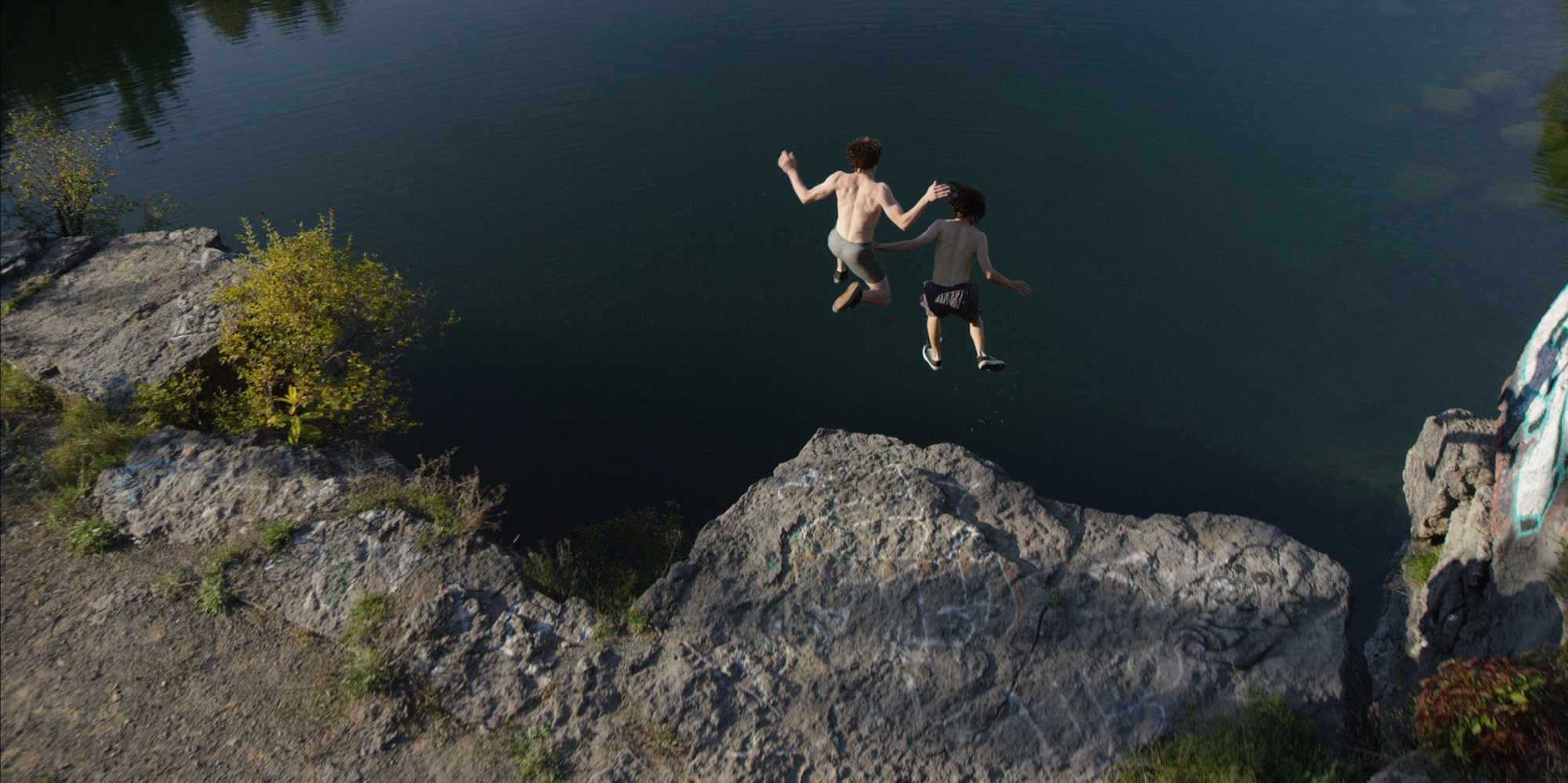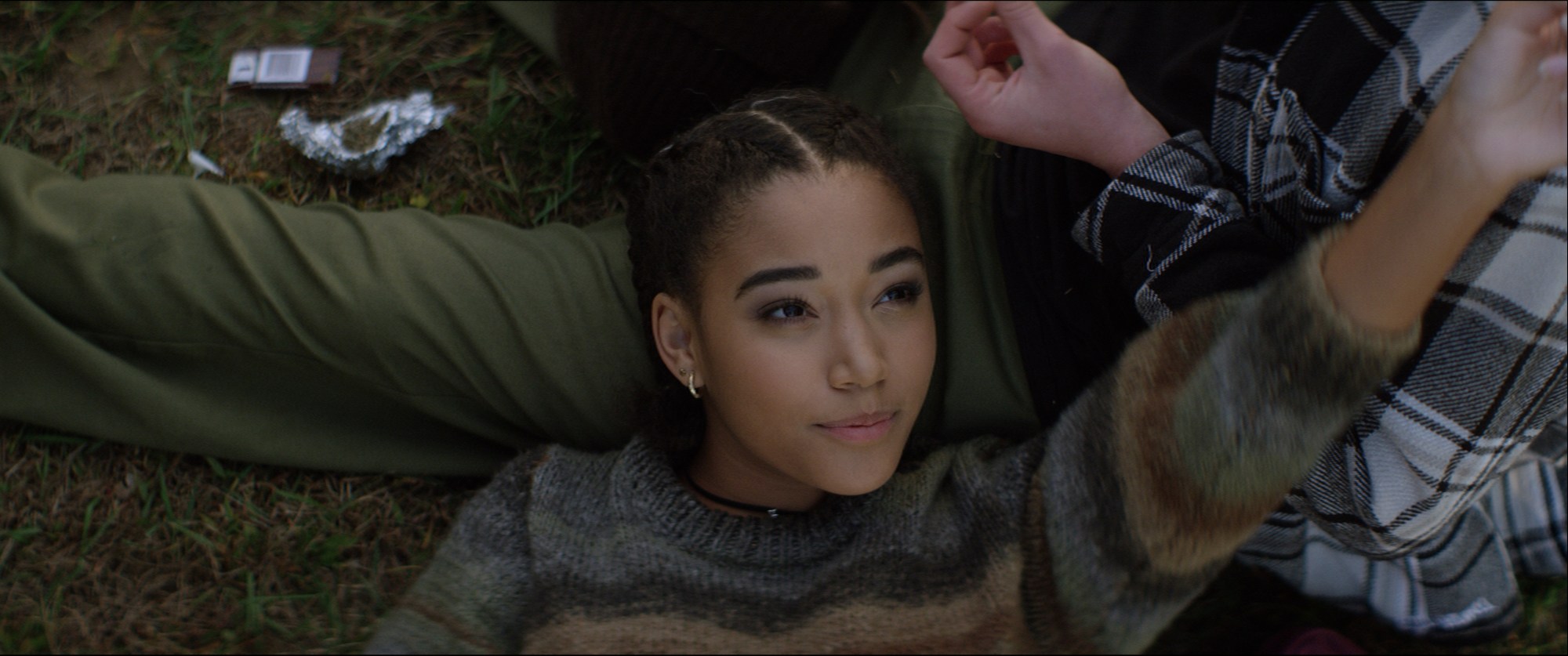Charlie Heaton looks uncannily like River Phoenix in As You Are, the first feature film by 24-year-old director Miles Joris-Peyrafitte. When he tosses his long sandy hair out of his face or gazes intently into the eyes of his character’s best friend, played by Owen Campbell, it’s hard not to think about My Own Private Idaho. It helps that As You Are is set in the early 90s, and that the main characters — a trio of friends played by Heaton, Campbell, and Amandla Stenberg — are diehard fans of plaid shirts.
But As You Are isn’t a nostalgia trip. It’s a film about “people finding each other,” says Joris-Peyrafitt. More than the time period or even the plot, what makes the movie unique is its honest depiction of the feelings that pass between close friends, and how undefinable those emotions can be. When Mark (played by Heaton) and Jack (Campbell) first meet, it’s immediately clear a bond is forming, despite the fact that their parents are newly dating and enjoy making out in public. Mark and Jack are both outsiders at their high school, and after straight-A student Sarah (Stenberg) saves them from a beating by a gang of standard-issue bullies outside a diner, the three kids become a single unit, connected by an intensity of feeling that seems both endless and dangerous. Interwoven between classic coming-of-age movie scenes — playing spin the bottle, skipping class, getting stoned — are flash-forwards to a police investigation into a mysterious shooting.
Joris-Peyrafitte and the movie’s co-writer, Madison Harrison, grew up in Albany, where they filmed As You Are. (They also went to school nearby, at Bard.) “We’ve been making movies in the area since we were seven years old,” says the director. That’s partly why everything feels so real: “It brought back a lot of memories.” While other movies about teenagers often rely on types and labels, As You Are exists in areas of in-betweenness. One moment after Mark suggests that Jack ask Sarah to prom, Mark offers to teaches him how to kiss with an IRL demonstration. It’s a stoned experiment that is quickly laughed off but also deeply heartfelt. “We were all there to do things differently,” says Joris-Peyrafitte, “We never wanted to do what felt safe.”
I wanted to speak about coming of age films in general. How do you feel about that label?
We thought of [As You Are] as our answer to the classic coming of age film. There have been a lot of films recently dealing with this age range in various ways and I think part of it has to do with the democratizing of films, so that younger people are now able to make stories.
Also, I’m definitely someone who struggled with a lot of coming of age content when I was younger. I didn’t think there was much that I could relate to, or that was trying to speak to me and my friends. It was kind of belittling in a way; it never took what we were feeling seriously. But your feelings are never as powerful or as real as they are at that age, you are a real person fully experiencing things. That was the story that we wanted to tell. We wanted to live inside of those feelings as opposed to watching somebody go through that.
When you were wrote the script, what came first?
It started off as a short film that I wrote when I was in college. I went to Bard and I took a screenwriting class with So-Young Kim. I had to get a bunch of ideas to her and I was so nervous that I wrote the whole script. It came from me and the co-writer Madison, who is the star of the short. We grew up in Albany where the film takes place and it was really about showing that landscape. The story we wanted to tell was built out of memories from my life and Madison’s life, but also how we remembered things cinematically.
Why did setting the film in the early 90s feel right?
The idea of memory is really important in the movie. The 90s is a time that is really ripe for nostalgia, but we wanted to avoid that. We were interested in the cultural backdrop: the 90s was before social media, before the internet became what it is now. We were coming out of the Reagan years and re-establishing gender roles and family values, and that is something that these kids are coming up against. [Mark’s] father is someone who is not just an asshole, he is trying to understand himself by identifying with militarism and this idea of hyper masculinity. Putting [the film] in the 90s, that atmosphere was there, without needing to be explicit.
We wanted to make a movie that was about people finding each other. The internet and social media have done incredible things for people going through things like this, building communities of like-minded people. But it’s a different sort of coping mechanism. This film is about people looking at each other and having to confront something immediate with each other — not through this sort of proxy relationship with a computer.

Charlie really reminds me of River Phoenix in the movie. Did you have the same reaction?
It’s kind of crazy. I think that he’s responsible for people making Gus Van Sant comparisons. The thing [Charlie and River] have most in common isn’t actually the way they look but that both of them have this magnetism on screen where they have an incredible amount of empathy. People overlook that with actors and performers, the level of empathy that somebody can bring, not just for their character but for the other characters around them. We got really lucky because everyone in the cast had that empathy and excitement. Everyone was willing to dive in and take risks.
How did you encourage that during filming?
This was a very small film and we had to figure out how to use that to our favor. Everyone lived in the same two houses right next to each other so we were spending every single day together. When we were done shooting we would make a fire and all sit around and talk about stuff. For me that was the most helpful thing possible because it meant that everyone was engaging all the time and we could blur the lines between what was the film and what was reality.
What was it like filming a movie about coming of age in the place where you grew up?
It was incredible because a lot of the kids that I made movies with when I was younger are part of this program called Youth FX and they were PAs or set photographers. So youth were with us making it and there was a feeling of this community that has your back. It makes you feel invincible: this was a story about where we are from and the community was so open to having us come in and tell that story. If we had made this movie in New York rather than Albany, it never would have happened!
The way the film depicts the changing relationships between the three friends feels so real. Especially because there’s no attempt to categorize their feelings.
We wanted it to be a movie where we were observing people falling in love with each other, about people who were figuring out what that means. And we wanted the audience to be figuring that out at the same time.
I think we achieved that by not putting any kind of label on it for the actors, by not talking about this as a movie where one kid or two kids discover that they are gay. Instead, we’d say, “This is your best friend in the world and these are feelings that you have and you don’t know why and just deal with what that immediate feeling is.”
Where are you shooting your next film? Will it also be set upstate?
Yes. Madison and I wrote a film called Mother’s Milk which is a noir that takes place in the Hudson Valley area. We’re taking that classic Humphrey Bogart thing but making it about a mother and a 16-year-old girl in this noir upstate world.
“As You Are” is in theaters now.
Credits
Text Alice Newell-Hanson
Images courtesy of Votiv Films
